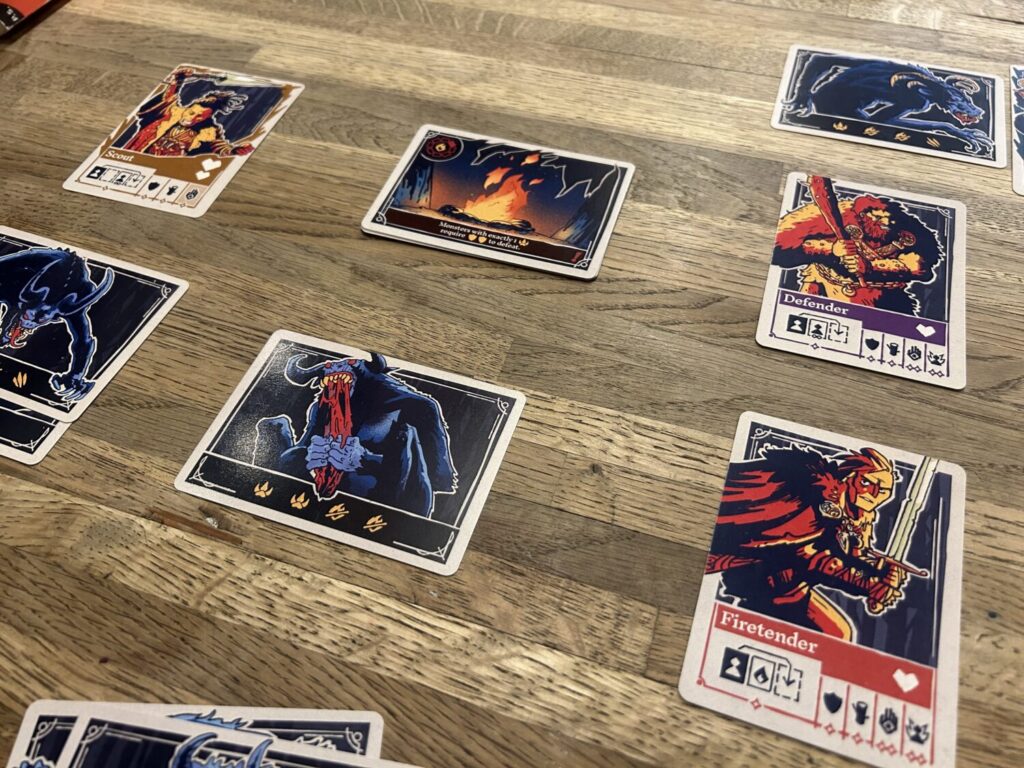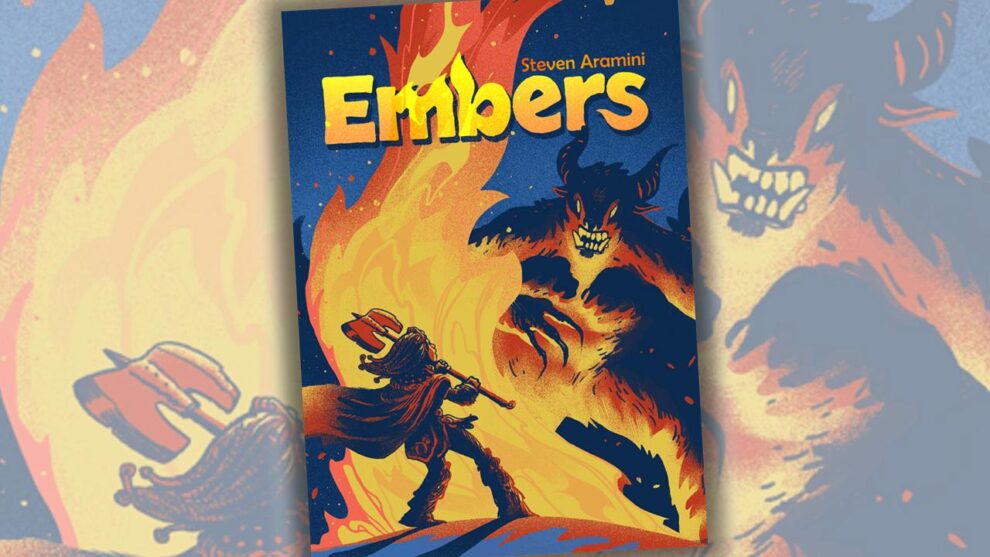Disclosure: Meeple Mountain received a free copy of this product in exchange for an honest, unbiased review. This review is not intended to be an endorsement.
I love that Button Shy exist, that crazed purveyor of 18-card games in cute li’l wallets. Even if most of their games fail to leave much of an individual impression as games, I have all the time in the world for the larger project. Button Shy makes games for people to enjoy, yes, but they also present an ongoing exercise in game design: What can be done with only 18 cards?
To make a compelling game out of 18 cards is terrifically difficult. Consider everything a contemporary audience expects from a game, and then ask yourself how you can pack all of that into 18 cards. You need setting, you need intelligible user interface, and you need an attractive product. When it all comes together, the 18-card restriction yields a Sprawlopolis, a Battlecrest, or a ROVE, something that transcends the restrictions of the medium. Often, the games that result are fine, but that’s alright. They’re inexpensive and don’t take up much space. By the time you’re done, you’ve learnt some things that work and some things that don’t.
From the jump, Embers makes one hell of an impression. The art, by Steven De Waele, is the best I’ve seen from Button Shy. While they’ve printed great art in the past—Dustin Dobson and Milan Zivkovic have done wonderful, funny work across the various installments of ROVE, for example—Embers is uniquely vibrant. The five heroes who spend the game defending their night fire from attack are rendered in bold yellows and oranges, capturing the light cast by the flame that sits at the center of everything.
 These heroes must work to fend off the beasts that roam the forest at night and come in waves to douse the flame. The game is played out in a three-by-three grid, with the campfire occupying the middle space. Each hero can move, defeat a monster, forage for wood for the fire, grant an action to someone else, or Promote, which flips the card over to a more powerful, more specialized side.
These heroes must work to fend off the beasts that roam the forest at night and come in waves to douse the flame. The game is played out in a three-by-three grid, with the campfire occupying the middle space. Each hero can move, defeat a monster, forage for wood for the fire, grant an action to someone else, or Promote, which flips the card over to a more powerful, more specialized side.
The puzzle of the game comes from the movement restrictions on each hero. No two share the same movement ability. Each requires various arrangements of heroes around the fire, and it is orchestrating those requirements that constitutes most of the decision space. The magic kicks in once you start to grow comfortable with their movement, when the mechanics dissolve and you no longer see cards sliding around a table, but allies darting around a campfire. It sounds stupid, but within two or three games, executing a perfect series of choreographed movements came to feel as evocative as a great game of Unmatched, the heroes bobbing and weaving, covering one another’s backs. Even if the mechanics don’t fill in all of those blanks, the feel of the game does.
Beasts that survive each round attack both the fire and your heroes. You have five in rotation, but no more than four will ever be out at any one time. You learn how they interact, what their promoted sides do, how best to respond to what the situation requires. It’s all very good. I don’t realistically know that Embers would hold my attention for all that many plays, I don’t see myself returning to this well more than a handful of times, but the amount of evocation it squeezes into ten minutes of play and only a few actions is remarkable. Here, we have learnt several things that work. The Button Shy experiment keeps turning out worthwhile results. Embers is a good game. It’s an even better design.










